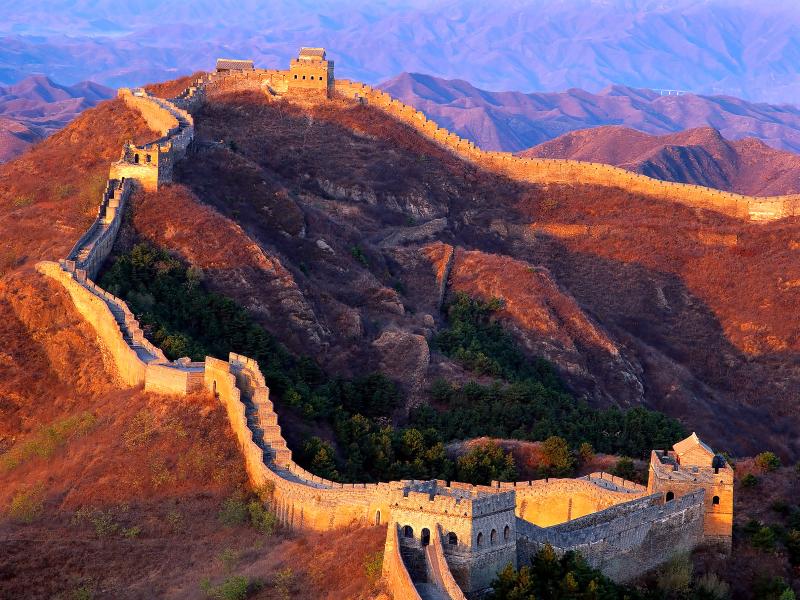
Essential places to visit across China
By Mark Johnson
Beijing is the capital of the People's Republic of China, the centre of the nation's politics, culture and international exchanges and a modern metropolis full of vitality. Beijing is one of the six ancient cities in China together with Xian, Luoyang, Kaifeng, Nanjing and Hangzhou. It had served as the capital for the dynasties such as Jin (1115 AD - 1234 AD), Yuan (1279 AD -1368 AD), Ming (1368 AD -1644 A D) and Qin (1644 AD - 1911 AD). Some of the best sights include Tiananmen Square, Summer Palace and The Beijing Capital Museum.
Xian
Xi'an, also called Chang’an, is the largest city in north-west China. Xian has won a reputation all over the world. More than 3,000 years of history including over 1,100 years as the capital city of ancient dynasties, have endowed Xian with an amazing historical heritage. Tourists marvel at the numerous historical sites and cultural relics in and around the city. The best attractions to visit include the Terra-cotta Army, the Banpo Museum and the Big Goose Pagoda.
Shanghai
As the largest city in China, Shanghai is located in central-eastern China, confronting the East China Sea. Shanghai is mainly sectioned into two parts: Pudong (east of the Huangpu River) and Puxi (west of the Huangpu River). Pudong is the new development zone. Shanghai has two airports - Shanghai Pudong International Airport ( PVG ) and Shanghai Hongqiao Airport. Shanghai Pudong International Airport caters for international flights while Hongqiao for domestic flights. When in Shanghai we would recommend visiting the Shanghai Bund, the Shanghai Jade Buddha Temple and the Shanghai Huangpu River.
Guilin
Located by the banks of the Li River, Guilin has gained fame both at home and abroad for its scenery; verdant mountains, unique rockeries, crystal waters and an abundance of caves. There are diverse communities who live here including the Zhuang, Yao, Hui, Miao, Mulao, Maonan and Dong. They add the much colour to the cultural life of the city. We would recommend visiting the Reed Flute Cave, Seven Star Park and Solitary Beauty Hill.
The Yangtze River
Yangtze River cruising should be on the list for those who seek the romantic escape and travel with their family or friends. The Yangtze River winds through the mountains and cities from the west to the east, entering the East China Sea near Shanghai. With a total length of over six and a half thousand kilomateres, the Yangtze River is the third largest in the world, just behind the Nile and Amazon. If you do visit, be sure you ask to see the Three Gorges.
Tibet
Tibet is a place far away from the rest of the world with the endless hills of the high plateau and the stunning Himalayas.
Today, travel networks are much improved and the most popular areas and quite accessible. Lhasa is the political and cultural capital of Tibet. Lhasa means in Tibetan "The land of gods". There are numerous scenic spots and historical sites in Lhasa Tibet. The best places to visit include Potala Palace, the Nobulingka, Drepung Monastery and the Jokhang Temple. Shigatse is the second biggest city in Tibet. Shigatse means in Tibetan "The Estate that materializes one's Dream ". If you do choose to visit, be sure to see the Tashilhunpo Monastery as it is the region’s main historic attraction.
Jiuzhaigou Sichuan
Situated in the depths of the mountains and bordering the area of Nanping, Songpan and Pingwu counties in Aba Tibetan and Qiang Autonomous Prefecture in the north-western Sichuan Province, Jiuzhaigou is a fairyland named after the Nine-Village Valley, which is the living place of nine Tibetan villages. The valley is about 50 kilometres long. In 1992, the area was listed on the world natural heritage list of UNESCO. A great family attraction is the Giant Panda Breeding Research Base, as well as the Emei Mountain and Huanglong.
Lijiang
Lijiang is situated in Yunnan Province of south China and is also on UNESCO's World Cultural Heritage list. It has the history of over 1,300 years. Lijiang is inhabited by Naxi people and stands on a plateau at 2,600m above sea level. It is well known for its natural scenery and green vegetation. It has the Jade Dragon Mountain as its backdrop. The old town blends naturally with the scenery. Music is a big part of the community and if you visit the region you will be sure to enjoy the traditional sounds dating back hundreds of years.
Zhangjiajie Hunan
Zhangjiajie City is located on the west mountains of Hunan Province. Under the administration of Zhangjiajie City, there is a district called Wulingyuan where the Wulingyuan Scenic Area is located. The area is sectioned into three parts; Zhangjiajie National Forest Park; Tianzi Mountain and Suoxi Valley. Most of the visitors stay at the Wulingyuan area instead of the city center of Zhangjiajie City.
The Silk Roads
The Silk Roads have a history of more than two thousand years. It actually started from Chang'an (the present Xian, Shaanxi Province) in the east and stretched to Rome in the west. The ancient silk road went through Shaanxi, Gansu, Qinghai provinces, Ningxia Hui and Xinjiang Uygur and then extended over the Pamirs, further extending to Central and West Asia and finally met the east bank of the Mediterranean Sea. The Silk Road has a total length of over two and a half thousand miles and over half of which is within China.
Share this article:



















